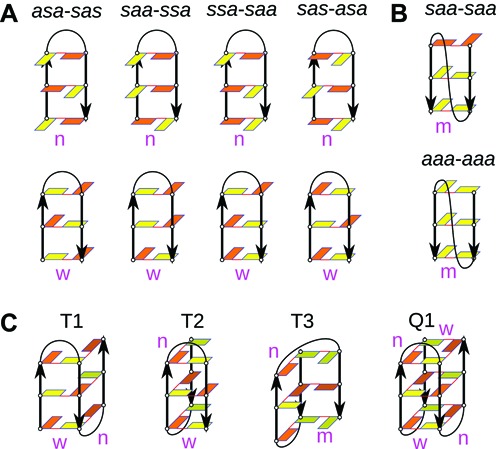Figure 1.

Basic schemes of the simulated structures. (A) Antiparallel hairpins with four different syn/anti (s/a) patterns. Each pattern has one variant with narrow groove and one with wide groove. (B) Parallel stranded duplexes. (C) Triplexes and a chair-like quadruplex with different loop types and order, all with s/a patterns capable of folding to the basket-type quadruplex 143D without any syn ↔ anti transition. Deoxyguanosine residues are shown as rectangles, syn-oriented are in orange, anti-oriented in yellow. Black lines depict backbone and arrows mark the 5′-end-to-3′-end direction. Red lines mean hydrogen bonding. ‘n’, ‘w’ and ‘m’ stand for narrow, wide and medium groove, respectively. Loop and flanking residues are not shown. The base pairing of GG pairs is cWH. For the sake of brevity, s/a pattern abbreviations in the Figure are compacted, e.g. asa-sas instead of 5′-asa—sas-3′ used in the text.
